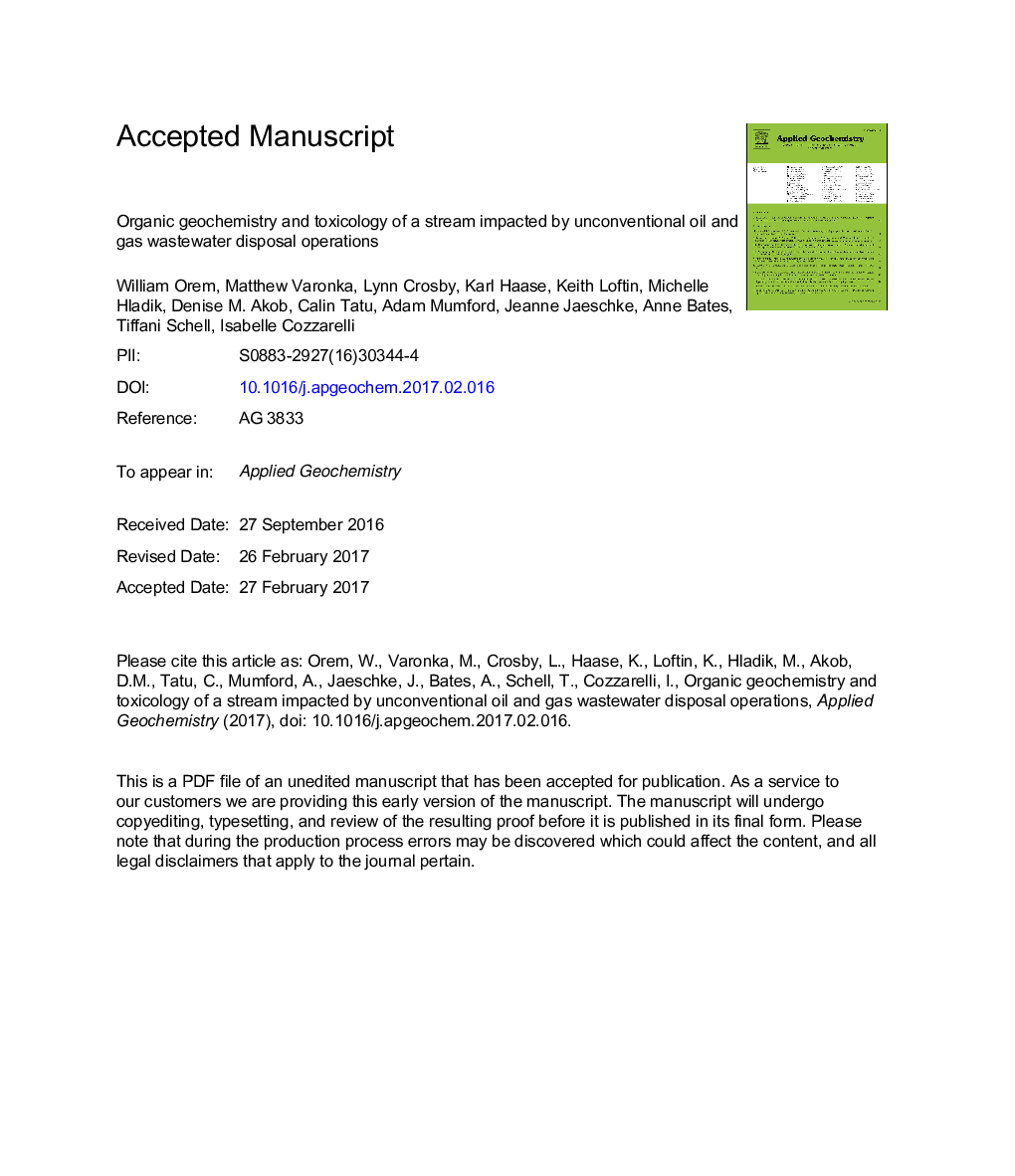| Article ID | Journal | Published Year | Pages | File Type |
|---|---|---|---|---|
| 5752589 | Applied Geochemistry | 2017 | 40 Pages |
Abstract
The large volume of wastewater produced during unconventional oil and gas (UOG) extraction is a significant challenge for the energy industry and of environmental concern, as the risks due to leaks, spills, and migration of these fluids into natural waters are unknown. UOG wastewater is often hypersaline, and contains myriad organic and inorganic substances added for production purposes and derived from the source rock or formation water. In this study, we examined the organic composition and toxicology of water and sediments in a stream adjacent to an underground injection disposal facility that handles UOG wastewaters. We sampled water and streambed sediments from an unnamed tributary of Wolf Creek upstream from the disposal facility, near the injection well, and downstream. Two sites downstream from the disposal facility contained organic compounds in both water and sediments that were consistent with a source from UOG wastewater. These compounds included: 2-(2-butoxyethoxy)-ethanol, tris(1-chloro-2-propyl)phosphate, α, α-dimethyl-benzenemethanol, 3-ethyl-4-methyl-1H-pyrrole-2,5-dione, and tetrahydro-thiophene-1,1-dioxide in water, diesel fuel hydrocarbons (e.g. pentacosane, Z-14-nonacosane), and halogenated hydrocarbons (e.g., 1-iodo-octadecane, octatriacontyl trifluoroacetate, dotriacontyl pentafluoropropionate) in sediments. Concentrations of UOG-derived organic compounds at these sites were generally low, typically 4 to <1 μg/L in the water, and <70 μg/g (dry wt.) in the sediment. In addition, water and sediment at a site immediately downstream from the facility contained many chromatographically unresolved and unidentified hydrocarbons. In contrast, sites upstream from the facility or in nearby watersheds not influenced by the disposal well facility contained primarily natural (biologically produced) organic substances from the local environment. Toxicological assays of human cell line exposures to water and sediment showed minimal effects. Results indicate that UOG wastewater has entered the stream and that UOG-derived organic substances are present. The contamination level, however, is low and appears to be restricted to sites immediately downstream from the disposal facility at this time.
Keywords
Related Topics
Physical Sciences and Engineering
Earth and Planetary Sciences
Geochemistry and Petrology
Authors
William Orem, Matthew Varonka, Lynn Crosby, Karl Haase, Keith Loftin, Michelle Hladik, Denise M. Akob, Calin Tatu, Adam Mumford, Jeanne Jaeschke, Anne Bates, Tiffani Schell, Isabelle Cozzarelli,
